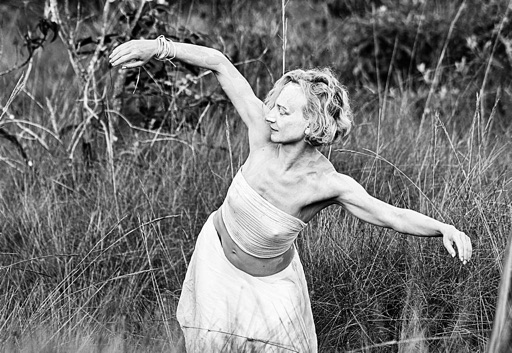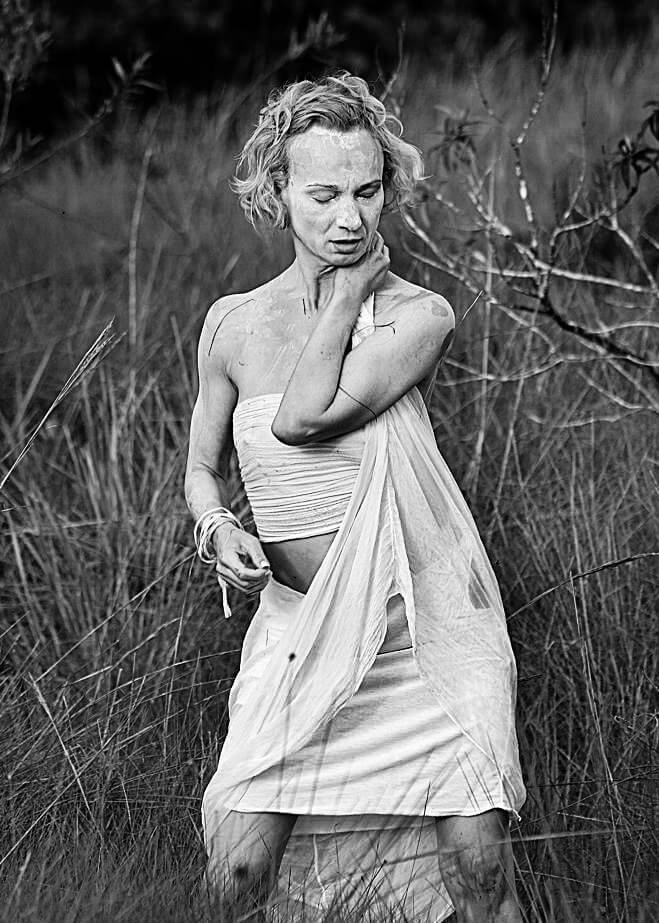Dancing - as a universal language - has been accompanying humans since the dawn of time. Dancing carried a different message in different times. It is still changing - just like the world we live in. It is basically a mirror of the life of our society.
In primitive cultures, dancing was a path connecting a person’s inner life with the surrounding external reality. Dancing was a way to express fear, joy, and other emotions. In the case of primitive cultures, the fear of the forces of nature as well as of gods and spirits was very strong. It was believed that dancing could affect supernatural forces. Dancing served therefore both a religious and a magical purpose - it protected from diseases, prevented death, and even healed. It was a means of asking gods for a better life. For the longed-for sun or rain.
In the ancient times, dancing was still very much associated with the worship of gods, but it was also valued for its therapeutic effects. Asclepius recommended dancing as a remedy for emotional problems. Plato considered dancing a medicine for the soul. Aristotle regarded dancing an important factor in the process of catharsis, and Pythagoras made use of music and dancing in treating mental illnesses. Apart from healing properties, dancing was also supposed to mould an individual’s spirit. According to Lucian of Samosata, sophist, dancing was mainly a bridge between the spirit and the body.
The Middle Ages was a period of expansion of the Roman Catholic Church and a time when dancing started gradually disappearing from churches. In the early days of Christianity, dancing was a way to express the worship of God and a form of thanksgiving. With time, ritual dancing grew to be associated with pagan culture and magical rites, and the act of dancing was condemned by the Church eventually. But that didn’t stop Europeans from coming up with a range of different forms of dance. These included courtly dances and folk dances.
Dancing was a regular on the ‘entertainment agenda’ at Renaissance courts. Not only aristocrats would dance. Monarchs themselves would as well.
In the Baroque, Louis XIV believed that dancing was of utter importance in the moral upbringing of people. As a dance aficionado, he founded the Royal Academy of Dance (Académie Royale de Danse) in 1661 to support the development of French ballet.
Dancing was a regular on the ‘entertainment agenda’ at Renaissance courts. Not only aristocrats would dance. Monarchs themselves would as well.
In the Baroque, Louis XIV believed that dancing was of utter importance in the moral upbringing of people. As a dance aficionado, he founded the Royal Academy of Dance (Académie Royale de Danse) in 1661 to support the development of French ballet.

In the age of Enlightenment, dancing was treated mainly as a means of expressing thoughts and ideas. At the turn of the 18th and 19th centuries, in the Romanticism era, men gave way to women in dancing. The change came about as a result of the political, economic, and cultural transformations taking place in that period. Women became icons of the dance culture of the time.
The turn of the 18th and 19th centuries was a time of an economic, social, and moral revolution. People, getting more and more lost in the industrialised world, started feeling a deep need to search for their own identity. In the 20th century, the great dance reformers like Isador Duncan or Maurice Bejart were dealing mainly with the correlation between the human body and the human psyche. In the 1960s, the concept of art as medicine was developed by American psychotherapists.
As you can see, every period has had an impact on the art of dancing. The civilisation of today is a time of constant changes and transformations. Apart from the achievements in the field of science, technology, medicine, communication, and consumer amenities, it also involves a deep ecological and moral-social crisis. We see progressing urbanisation, increasing levels of noise and radiation, popularisation of automation, and overconsumption. It’s easy for an individual existing in the virtual world of today get lost or confused.
The turn of the 18th and 19th centuries was a time of an economic, social, and moral revolution. People, getting more and more lost in the industrialised world, started feeling a deep need to search for their own identity. In the 20th century, the great dance reformers like Isador Duncan or Maurice Bejart were dealing mainly with the correlation between the human body and the human psyche. In the 1960s, the concept of art as medicine was developed by American psychotherapists.
As you can see, every period has had an impact on the art of dancing. The civilisation of today is a time of constant changes and transformations. Apart from the achievements in the field of science, technology, medicine, communication, and consumer amenities, it also involves a deep ecological and moral-social crisis. We see progressing urbanisation, increasing levels of noise and radiation, popularisation of automation, and overconsumption. It’s easy for an individual existing in the virtual world of today get lost or confused.

We are surrounded by a world of illusion and exaggeration. The pressure to be the best lowers our self-esteem. Chasing after material things and aspiring to luxury makes people work well over a dozen hours per day, with no time for nurturing relationships with others and pursuing their passions. We, Westerners, have got confused. I believe that the reason for this confusion lies in our disregard for the spiritual aspect of our nature. We’re too pragmatic and materialistic. We don’t feed our souls.
One of the trips I’ve made aimed to help me take better care of my spirit. I wanted to keep on exploring the world and experiencing the diversity of cultures - so I decided to go to Brazil. In the period from 25 February to 5 March 2020 I took part in the Arroboboi dance workshop organised by Jahlyn Karuna. The workshop took place on a farm Jahlyn started right next to the Chapada dos Veadeiros National Park found in the central part of Brazil. Chapada is mainly about amazing waterfalls, crystal-clear rivers, plenty of rock outcroppings, and unforgettable views. I spent 10 days there, accompanied by other dancers from across the world, strengthening my spirit. We inspired each other in a joint creative process. We took part in classes covering various dance techniques, music, dance composition, and improvisation. The end of the workshop involved each participant perform their ritual dance, paying homage to our greatest potential in connection with nature, drawing inspiration and energy from it. Our solo dance performances took place in a remarkable setting, in a grass-covered, bushy savannah. Our creations and artistic manifestations were witnessed by us and by the surrounding fauna and flora.
One of the trips I’ve made aimed to help me take better care of my spirit. I wanted to keep on exploring the world and experiencing the diversity of cultures - so I decided to go to Brazil. In the period from 25 February to 5 March 2020 I took part in the Arroboboi dance workshop organised by Jahlyn Karuna. The workshop took place on a farm Jahlyn started right next to the Chapada dos Veadeiros National Park found in the central part of Brazil. Chapada is mainly about amazing waterfalls, crystal-clear rivers, plenty of rock outcroppings, and unforgettable views. I spent 10 days there, accompanied by other dancers from across the world, strengthening my spirit. We inspired each other in a joint creative process. We took part in classes covering various dance techniques, music, dance composition, and improvisation. The end of the workshop involved each participant perform their ritual dance, paying homage to our greatest potential in connection with nature, drawing inspiration and energy from it. Our solo dance performances took place in a remarkable setting, in a grass-covered, bushy savannah. Our creations and artistic manifestations were witnessed by us and by the surrounding fauna and flora.

The workshop was a gift to each one of us. We experienced creative energy when working with dancing as a form of art, its heritage given to us by time. It was a journey within, full of inspiration and delight.
In the stressful reality of today, it’s really important for us to deepen our relationship with nature and learn how to maintain an inner balance by making use of our creativity.
Let’s take good care of our souls. Dance, as Martha Graham said, is the hidden language of the soul.
In the stressful reality of today, it’s really important for us to deepen our relationship with nature and learn how to maintain an inner balance by making use of our creativity.
Let’s take good care of our souls. Dance, as Martha Graham said, is the hidden language of the soul.